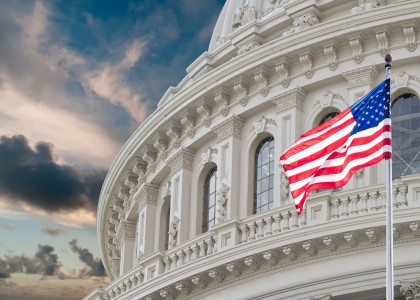WASHINGTON, DC —The Trump administration’s 2020 budget request, released today, proposes a drastic, 86% cut in new funding for the Department of Energy’s office that handles popular and cost-saving energy efficiency programs. It would also seek to fund the popular ENERGY STAR® program entirely from user fees.
“This proposal, if enacted, would cause Americans’ energy costs to rise, while killing jobs around the country,” said Steve Nadel, ACEEE executive director. “Energy efficiency directly supports 2.3 million US jobs and indirectly, many more. In addition to putting these jobs at risk, these cuts run counter to the administration’s own goals of promoting economic growth and reducing wasteful spending. We hope Congress will stand up for business owners, workers, and consumers by blocking the proposed 2020 budget cuts.”
The administration proposes $343 million in new funding for the Office of Energy Efficiency and Renewable Energy — an 86% cut from the prior year’s actual funding of $2.4 billion. The office runs many programs that could be severely impacted; as usual, it would carry over additional funding from previous years.
While the Department of Energy has not yet released detailed numbers, the Environmental Protection Agency would eliminate the SmartWay program, Combined Heat and Power Partnership, and other voluntary programs, as well as seek to make ENERGY STAR self-funding and cut funding for its vehicle emissions program.
ACEEE’s Federal Energy Efficiency Program Fact Sheet estimates the impacts of 7 programs:
- The Department of Energy (DOE) appliance standards program sets minimum efficiency levels for about 60 consumer and commercial products. It already saves the average family almost $500 each year in energy and water bills.
- The Environmental Protection Agency vehicle emissions program sets emissions requirements and fuel economy labels for cars and trucks. If allowed to take effect, the 2017–2025 standards will help Americans save $370 billion through 2030.
- The DOE Building Energy Codes Program helps states and local governments develop and implement energy codes for homes and commercial buildings. It saves the average family with a new home $260 in energy bills each year.
- The ENERGY STAR program labels efficient products and runs efficiency programs for homes, commercial buildings, and industry. It saves as much electricity as 30 million homes use in a year.
- DOE Industrial Assessment Centers train college students to help small and medium-sized manufacturing plants save energy. They have assisted more than 18,000 plants.
- The DOE State Energy Program helps state governments advance energy efficiency, renewable energy, and energy security. Additional investments could save as much as $7 billion through 2040.
- The DOE Weatherization Assistance Program (with added funding from the Low-Income Home Energy Assistance Program) makes energy efficiency improvements to the homes of low-income families. It saves families an average of $4,200 in lifetime utility bills.



